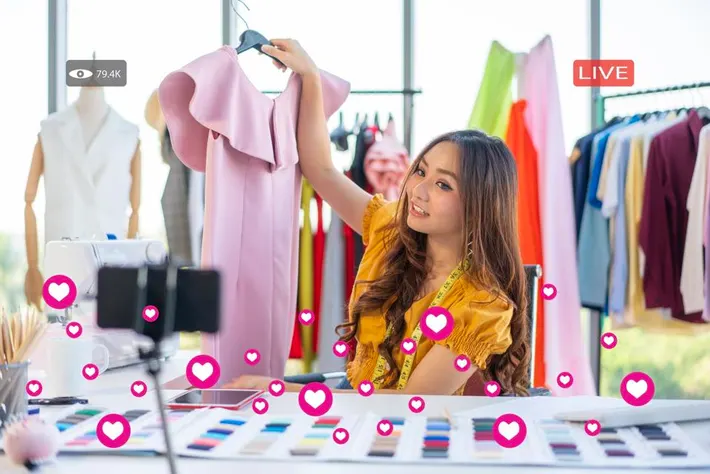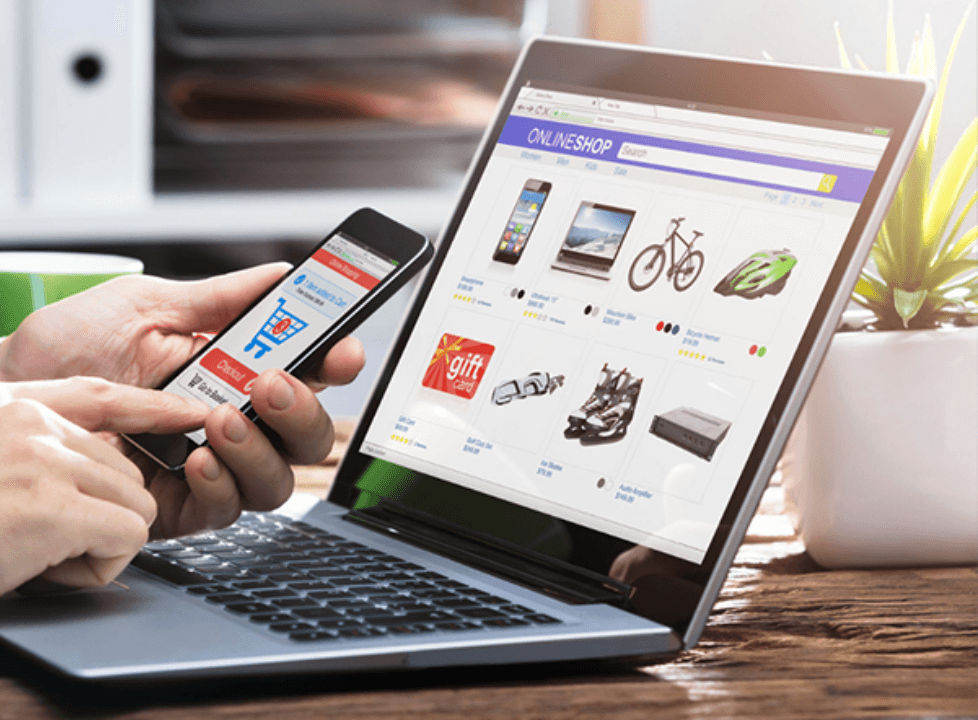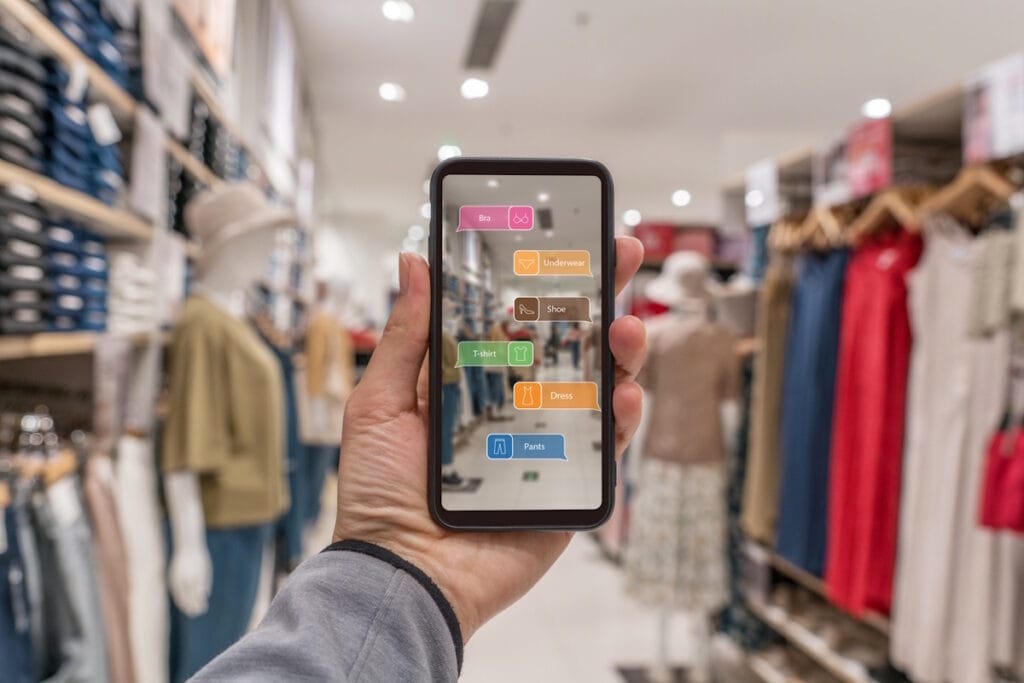Social commerce is booming. U.S. social-media-driven sales are projected to hit nearly $80 billion by 2025shopify.com, as consumers spend ~2½ hours per day on appsshopify.com. 17% of all online sales will come through social platforms in 2025shopify.com, and more than 104 million Americans will be “social shoppers”shopify.com. Even standard ads work: one survey finds almost half of social users bought a product after seeing an adshopify.com. For Direct-to-Consumer (DTC) merchants on Shopify, Amazon or other platforms, this means TikTok and Instagram aren’t just for brand awareness – they can be direct sales channels. For example, beauty brand JUNO & Co. sells over 10× more on TikTok than on Instagram or Facebookshopify.com, illustrating TikTok’s conversion power.
TikTok and Instagram each offer unique tools and audiences. Instagram has a 6-year head start and 2+ billion usersshopify.com, with 87% of people saying influencers on IG inspired them to purchasejuphy.com. Meanwhile TikTok’s explosive growth is putting its usership on track to overtake Instagram’s active shoppers by 2025. Both platforms now let brands tag products, sell in-app, and partner with creators. This guide shows DTC brands and sellers exactly how to turn TikTok and Instagram interest into sales – covering organic content, paid ads, shoppable features (Instagram Shopping and TikTok Shop), affiliate/link tools, influencer partnerships, UGC strategies, and tracking.
Organic Content Strategies
Organic content builds awareness and trust, fueling social commerce over time. For DTC sellers, the goal is engaging TikToks and Reels that spark interest and drive traffic. Key tactics include:
- Authentic product demos and tutorials. Show products “in action” through how-to clips or lifestyle videos. For example, fitness brands demo apparel in workouts, and beauty brands do quick makeup tutorials. UGC (user-generated content) is gold here: repost videos from real customers or micro-influencers using your product. This social proof makes products relatable and trustworthy.
- Leverage trends & hashtags. Participate in trending sounds, challenges, or hashtags. TikTok’s #TikTokMadeMeBuyIt trend (and its Instagram equivalent) signals users actively shopping on socialnewsroom.tiktok.com. Create branded challenges or join popular ones with a product twist. For example, running a dance or transformation challenge that naturally incorporates your product gets views and sparks sales interest.
- Short, engaging Reels/TikToks. Keep clips fast-paced (15–30s) with a strong visual hook in the first seconds. Show the product and its benefits quickly. Many TikTok ads see higher engagement when they mimic organic style. Use captions and text overlays with a clear CTA like “shop link in bio” or “swipe up.”
- Carousel Posts and Guides (Instagram). On Instagram, use multi-image posts or Guides to highlight product collections or step-by-step uses. These mix inspiration with shopping. Tag products in each image so viewers can tap to shop. 47% of marketers report using Instagram’s Shop tab feature to showcase productsjuphy.com.
- Regular Stories and Lives (Instagram). While Instagram ended its live-shopping broadcasts in 2023timesofindia.indiatimes.com, stories remain powerful. Use Instagram Stories with Product Stickers to tag items, and the link sticker to direct traffic. Highlight UGC Stories from customers or influencers to build community. (Tip: pin story highlights so that product tags remain easily accessible.)
Every piece of content should subtly point to your store. Always include a call-to-action (CTA): “Check the link in bio,” “Swipe up to buy,” or “Use code TIKTOK10.” These direct users from entertainment to your landing page. (Tip: even Instagram’s feed posts can say “link in bio” in the caption.) Over time, consistent content builds brand affinity – Instagram data shows 87% of users get purchase inspiration from influencersjuphy.com, so organic reach is a valuable funnel into sales.
Paid Ad Strategies
Paid social ads give an immediate lift in traffic and sales when organic reach isn’t enough. Both platforms have robust ad managers and creative formats:
- TikTok In-Feed and Spark Ads. TikTok In-Feed ads (skippable videos in the For You feed) can blend seamlessly with user content. Make the first 2–3 seconds highly engaging. You can also boost your own high-performing TikToks as Spark Ads, leveraging existing videos and organic engagementads.tiktok.com.
- TikTok TopView and Branded Hashtag Challenges. Use TopView ads (autoplay on app open) to launch big promotions or new products. Branded Hashtag Challenges (sponsored TikTok challenges) can generate tons of UGC: partner with a creator to kick off a challenge that highlights your product. Always include a shopping link in the branded hashtag page.
- TikTok Creative Tools. Take advantage of TikTok’s ad tools: Spark Ads (to turn organic content into ads), Smart+ AI optimization (for efficient targeting), and the TikTok Creative Exchange (TTCX) to co-create content with vetted creatorsads.tiktok.com. Split-test different creative variations and use TikTok’s pixel for conversion tracking (see “Analytics” below).
- Instagram Feed and Story Ads. On Instagram/Meta, run targeted ads on the feed, stories, and Reels. Use high-quality images or short videos that match the platform aesthetic. Tag products in Ads with Shopping feature so users can tap and buy directly. A rule of thumb is to mirror what’s working in your organic posts – reuse the best influencer footage or user testimonials as sponsored content.
- Shopping-specific ads. Both platforms offer catalog-based shopping ads: Instagram’s Shopping Ads (including Reels Shopping ads) and TikTok’s Shop Ads (for TikTok Shop). These dynamic ads pull from your product feed to show relevant items. For TikTok, the platform even advises merchants: “Establish a TikTok Shop to convert organic content into shoppable videos, and utilize solutions like Shop Ads to boost sales”ads.tiktok.com.
- Retargeting and Lookalikes. Install the TikTok Pixel and Facebook/Instagram Pixel on your site. Then retarget people who have viewed products or added to cart with discount offers. Also create lookalike audiences from converters – TikTok and Meta can automatically find similar users to expand reach.
Budget carefully: e-commerce conversion rates on social may be modest (~1–2%), so test small first. Focus on metrics like CTR, Add-to-Cart rate, and ROAS rather than just impressions. According to Shopify, DTC brand KNO Dress used tools like Spark Ads and TikTok’s AI optimizer (Smart+) to achieve an 8× ROASads.tiktok.com. In your account, monitor sales tied to each campaign and shift spend to top performers.
Shoppable Platforms & Features
Take full advantage of each platform’s commerce tools to let customers buy with minimal friction:
- TikTok Shop: TikTok’s in-app marketplace lets brands sell directly. Videos and LIVE streams can include product tags that pop up for users to tap and purchasenewsroom.tiktok.com. On your TikTok profile, a new Shop tab can showcase curated product collections with reviewsnewsroom.tiktok.com. TikTok also has an Affiliate Program: creators connect to brands and earn commission on sales of tagged products in their videos or livesnewsroom.tiktok.com. And TikTok recently rolled out Shop Ads, which specifically promote TikTok Shop listings within feedsnewsroom.tiktok.com. (TikTok even offers “Fulfilled by TikTok” logistics for U.S. merchants, though smaller sellers can self-fulfill.) In short, TikTok Shop makes the video-to-cart jump painless: users can discover a product in a For You video and buy it without leaving the appnewsroom.tiktok.com.
- Instagram Shopping: Instagram lets approved business accounts set up a Shop (catalog) directly on their profile. You can tag products in Feed posts, Reels and Stories so viewers tap to see details and buy. Since March 2023, Meta has required new shops to enable Instagram Checkout (in-app payment) for seamless shoppingtechcrunch.com. (This means U.S. brands need to toggle on “Checkout” so purchases stay inside Instagram or Facebook.) Once enabled, customers can tap “Shop Now” on your content and pay with saved cards or Shop Pay. Even without Checkout, use the link sticker in Stories or a “View Products” button on your profile. Over 2 billion people use Instagram, with 130 million tapping product tags each monthshopify.com, so setting up an Instagram Shop is a must.
- Affiliate & Collab tools: Beyond in-app shops, both platforms have affiliate/creator tools. On Instagram, use Shopping Tags with affiliate links: creators can tag your products in posts and earn commissions via Shopify Collabs or Instagram’s affiliate featuresshopify.comshopify.com. Shopify notes that Instagram’s “expanded Shop features in 2025” even let creators tag products directly with built-in commission trackingshopify.com. On TikTok, sign up for the TikTok Creator Marketplace and Affiliate Program to run paid collaborations. You can also use third-party affiliate networks (Amazon Associates, ShareASale, etc.) and have influencers share tracked links or codes.
- Link-in-Bio landing pages: Use a smart link tool (Linktree, Linkpop, Lnk.Bio, Shorby, etc.) to consolidate promos. For example, Shopify’s Linkpop lets you create a shoppable landing page in seconds: you can feature multiple products with “Buy” buttons (powered by Shop Pay) so followers stay in-app to purchaseshopify.com. Linkpop’s biggest benefit is that each link can open product detail within your mini-store and allow checkout in just 3 tapsshopify.com. (One user says Linkpop “has become a must-have in all our bios – the added product pictures drive sales”shopify.com.) Using a link tool means you can switch campaigns on the fly: today it might point to a holiday sale collection; next week to an email signup or downloadable guide. Always use UTM parameters on your link page to track traffic and conversions from TikTok vs Instagram.
- Analytics & Pixels: Install the TikTok Pixel on your website (or enable native Shopify integration) to record events like “AddToCart” and “Purchase.” Do the same with Meta Pixel for Instagram ads. Then in TikTok Ads Manager and Meta Ads Manager, you’ll see performance of each campaign and placement. For live traffic, use Google Analytics to track social referrals. On-platform, use Instagram Insights and TikTok Analytics to monitor engagement, follower growth, and profile clicks. Set up Business or Professional accounts on both platforms to access full metrics.
Influencers, Affiliates & UGC
Influencer partnerships and user-generated content (UGC) are the lifeblood of social commerce. They provide social proof and scale word-of-mouth:
- Partnership structure: Decide how to compensate influencers. Common models include flat fees for sponsored posts, commission/affiliate deals for sales, or free product + discount-code campaigns. Instagram’s Brand Collabs Manager and TikTok’s Creator Marketplace help find creators in your niche. Treat partnerships as flexible collaborations: e.g. fitness brands might supply workout attire to a trainer for a series of videos (free gear plus potential bonus for sales), while a beauty brand might pay a micro-influencer $100-$500 per IG Reel plus an affiliate link. Survey data shows micro-influencers (10K–50K followers) charge a few hundred dollars per post, yet they often yield higher engagement per dollarshopify.com.
- Clear CTAs and tracking: When running influencer campaigns, instruct creators to include a direct CTA (call-to-action) in caption and video: for example “Use code SPRING10 on our link,” or “Tap the shopping bag icon to buy this lip gloss.” TikTok tips emphasize that 90% of influencer-backed TikToks use a product tag or promo codetoptal.com to drive sales. Always provide unique discount codes or trackable links for each influencer. This way you can monitor who brings the most traffic and sales.
- Affiliate tools: Leverage built-in affiliate features. On Instagram, set up affiliate links through Shopify Collabs or third-party platforms. Creators earn a percentage for each sale via their linkshopify.com. TikTok’s affiliate program lets you recruit creators to promote your products for commissionnewsroom.tiktok.com. Affiliate marketing motivates consistent promotion: “Instagram affiliates get a commission on every sale made using their unique link or code”shopify.com, so they’re incentivized to create high-quality content.
- Maximizing UGC: Encourage your customers to post about you. Run hashtag contests or giveaway campaigns (e.g. “Post an unboxing with #MyBrand to win free product”). Repost this UGC to your stories/feed – it’s authentic content that rivals any ad. According to Shopify, brands that harness creators see huge uplifts: baby gear brand Lalo tripled its sales in six months by facilitating influencer partnerships via Shopify Collabsshopify.com. (Lalo’s example shows even small DTC brands can scale through micro-influencers.) Highlight top UGC on your Shop pages too; shoppers trust peer content. Even on Instagram ads, using real customer photos/videos tends to yield better CTR than polished studio shots.
- Community engagement: Reply to comments, share DMs when relevant, and use stories polls/questions to involve followers. The more you make customers feel heard, the more they will evangelize your brand. Remember 87% of Instagram users follow a business, and 75% of “shopping enthusiasts” use IG monthlyjuphy.com – if you prompt engagement, those users are your potential shoppers.
Driving Conversions & Optimization
Turning social traffic into revenue requires a frictionless path and vigilant analysis:
- Seamless checkout: Where possible, keep customers in-app. Use TikTok Shop and Instagram Checkout. If you’re sending people to your website, ensure it’s mobile-optimized and fast. Minimize clicks: ideal flows are no more than 2–3 steps from video to Buy button. Shopify’s Linkpop and Shop Pay can bypass multiple pages (as a buy button can jump straight to purchaseshopify.com).
- Clear CTAs: Each video or ad must have a clear “next step.” Verbal cues (“click the link”), text overlays (“Shop Now!”), and pinned comments should all guide users. For example, TikTok Shop advises merchants to “make sure influencers include clear calls-to-action (CTAs) … directing followers to visit your TikTok Shop”blog.thecrowdfundingformula.com. Test different phrasing: “limited-time discount code,” “new collection drop,” etc., and see what drives clicks.
- Use data & retargeting: Monitor which content drives the most clicks and purchases. TikTok’s analytics and Facebook’s conversion reports show which posts/ad creative perform best. Use UTM parameters so Google Analytics can tie Instagram or TikTok campaigns to website sales. Always set up retargeting: e.g. retarget TikTok video viewers who didn’t buy with a follow-up ad or Instagram Story. Many brands see higher AOV on second-chance offers.
- Measure ROI: Track metrics like Cost Per Acquisition (CPA), Return on Ad Spend (ROAS), conversion rate and Average Order Value. TikTok Business and Meta Ads dashboards give these figures per campaign. A/B test continuously: for instance, KNO Dress ran split campaigns with AI optimization vs manual and used weekly checkpoints to double down on high-ROAS adsads.tiktok.com. Optimize budgets toward the best-performing platform and audience. Remember, a strong creative on Instagram might flop on TikTok and vice versa, so tailor content and budget to each platform’s strengths.
- Scale and iterate: As you gather sales data, refine. Increase budgets on campaigns with positive ROAS. Try new ad formats or audiences (lookalike targeting of past buyers, interest targeting, etc.). Periodically refresh your organic content strategy by incorporating current memes or trends. The social-media environment changes fast – review performance monthly and adapt.
Real-World Examples
Many DTC brands are already proving these tactics:
- JUNO & Co. (beauty): By focusing on TikTok content and shop features, JUNO & Co. now earns 10× more sales on TikTok than on Instagram/FBshopify.com. They did this by running shoppable TikTok ads and enabling TikTok Shop, demonstrating the payoff of aligning channel to audience.
- Lalo (baby gear): Used influencer collabs via Shopify’s Collabs (affiliate links and posts) to triple sales in 6 monthsshopify.com. They combined micro-influencer content, UGC, and shoppable links to ramp up growth.
- TikTok viral products: Items like the “Lion Latch” travel case and Love & Pebble beauty pops were driven by TikTok community buzz (“#TikTokMadeMeBuyIt”)newsroom.tiktok.com. These products sold out as creators tagged them in engaging tutorial videos, proving social buzz directly translates to sales.
- Glossier/Rare Beauty (beauty brands): These brands leverage everyday customer content and influencers on Instagram. They often repost customer selfies (UGC) and run frequent affiliate code campaigns with micro-influencers, making their products feel community-driven and fresh in the feed.
- Gymshark (apparel): While not tiny, Gymshark’s model is instructive: they built a network of fitness influencers and ambassadors on both TikTok and Instagram. They release challenges (e.g. home workout routines) each year, tagged with their gear. Each tagged post is effectively a product ad to engaged followers, driving massive traffic on launch day.
- Shopify merchants: Shopify reports that merchants using Shop Campaigns (Meta’s catalog ads across platforms) gained up to 24% more new customers in 2023, and even found over 1 million first-time buyers in aggregate. This underscores that using all available social shopping features can accelerate new customer acquisition.
These cases share a few principles: integrate content and commerce (shoppable tags, affiliates), leverage community (influencers and UGC), and iterate quickly (A/B test creatives and tweak spend).
Conclusion
For DTC and e-commerce sellers, TikTok and Instagram are no longer optional extras – they’re full-fledged sales channels. By combining engaging content (leveraging trends, Reels, and UGC) with shoppable features (product tags, TikTok Shop, affiliate links) and targeted ads, you can turn scrolling browsers into paying customers. Track everything: use Pixels, analytics, and affiliate codes to see exactly how much each platform contributes. And remember: at its core, social commerce is about meeting shoppers where they hang out online. A strategically placed “Buy Now” button in your TikTok video or Instagram story is the bridge from discovery to sale. Follow the tools and tactics above to build that bridge – and watch your social views convert into real revenue.



